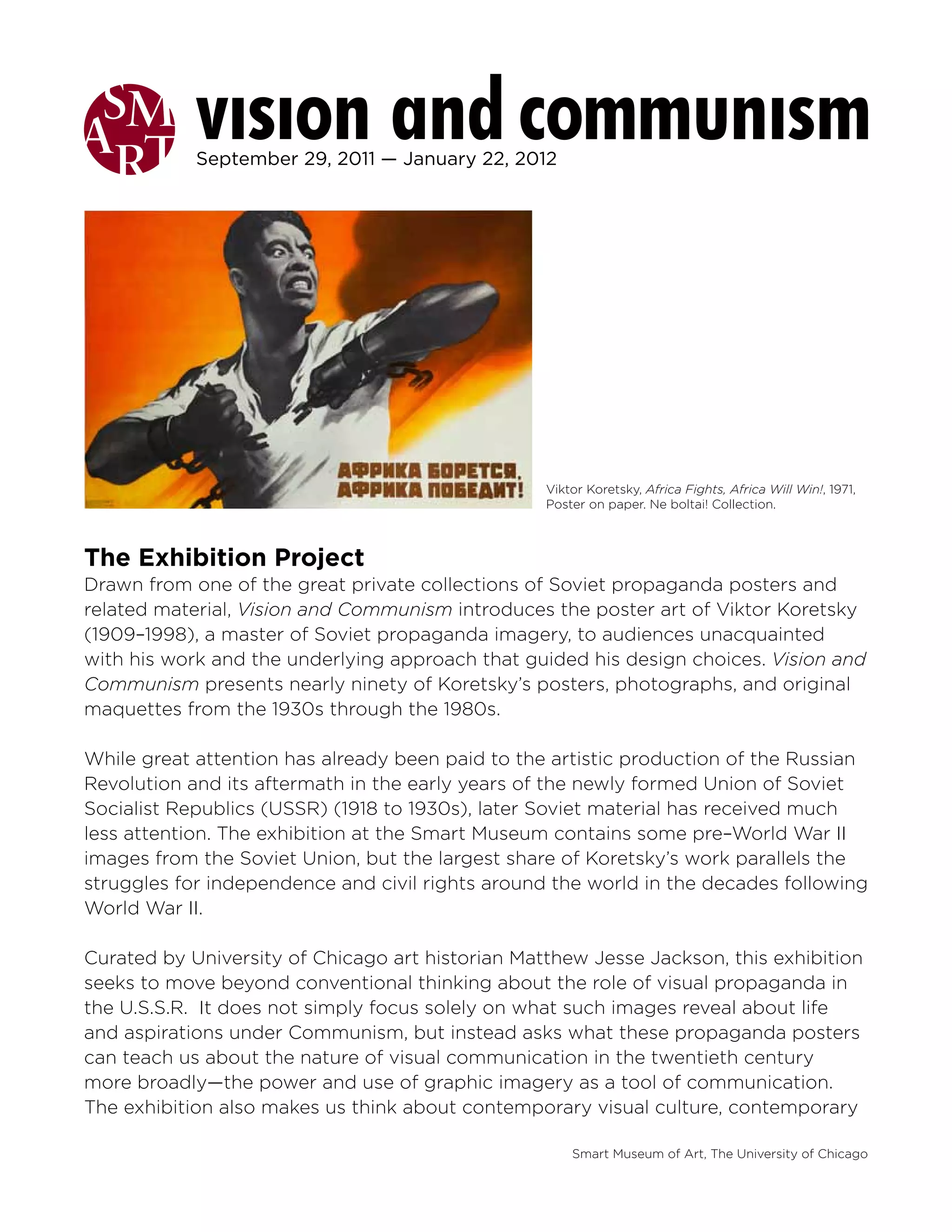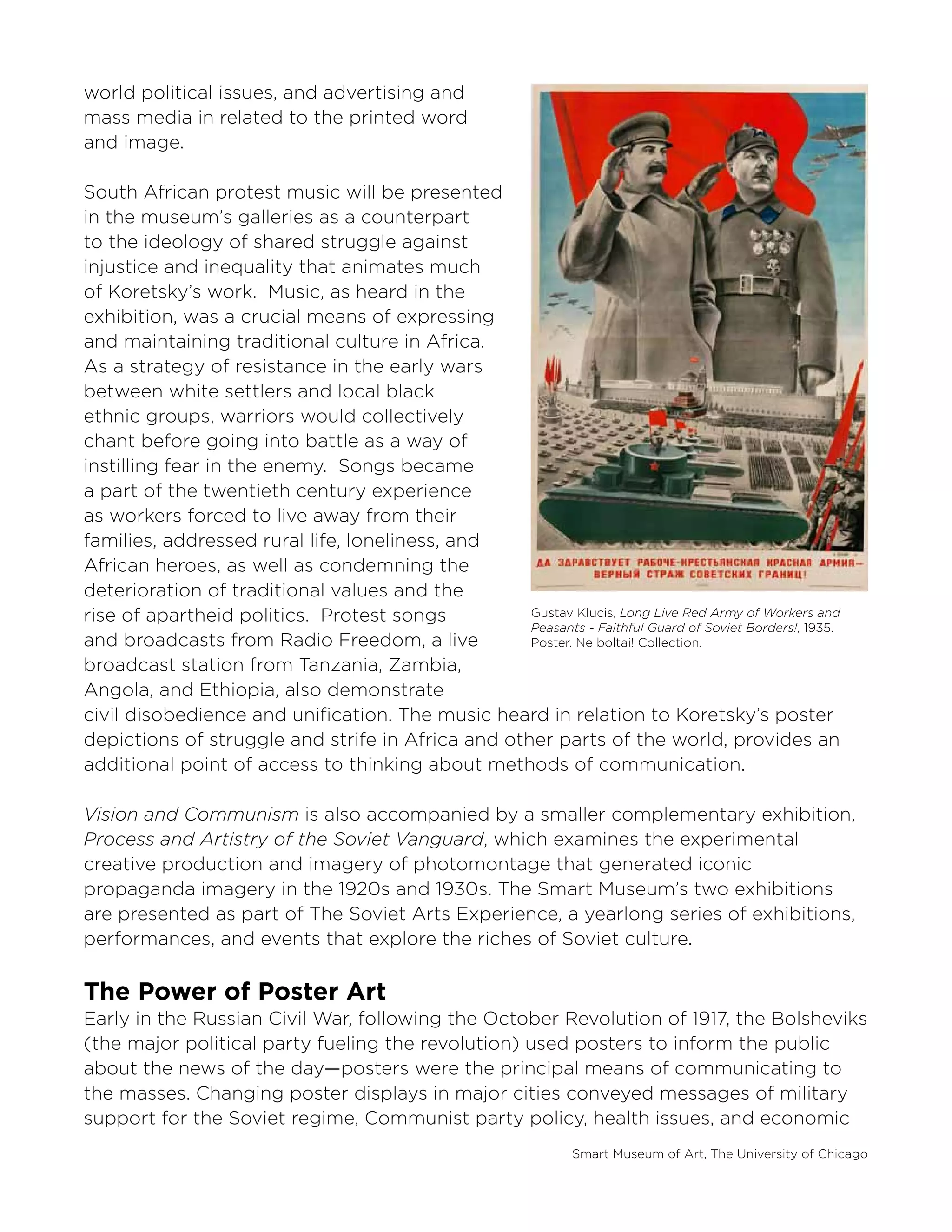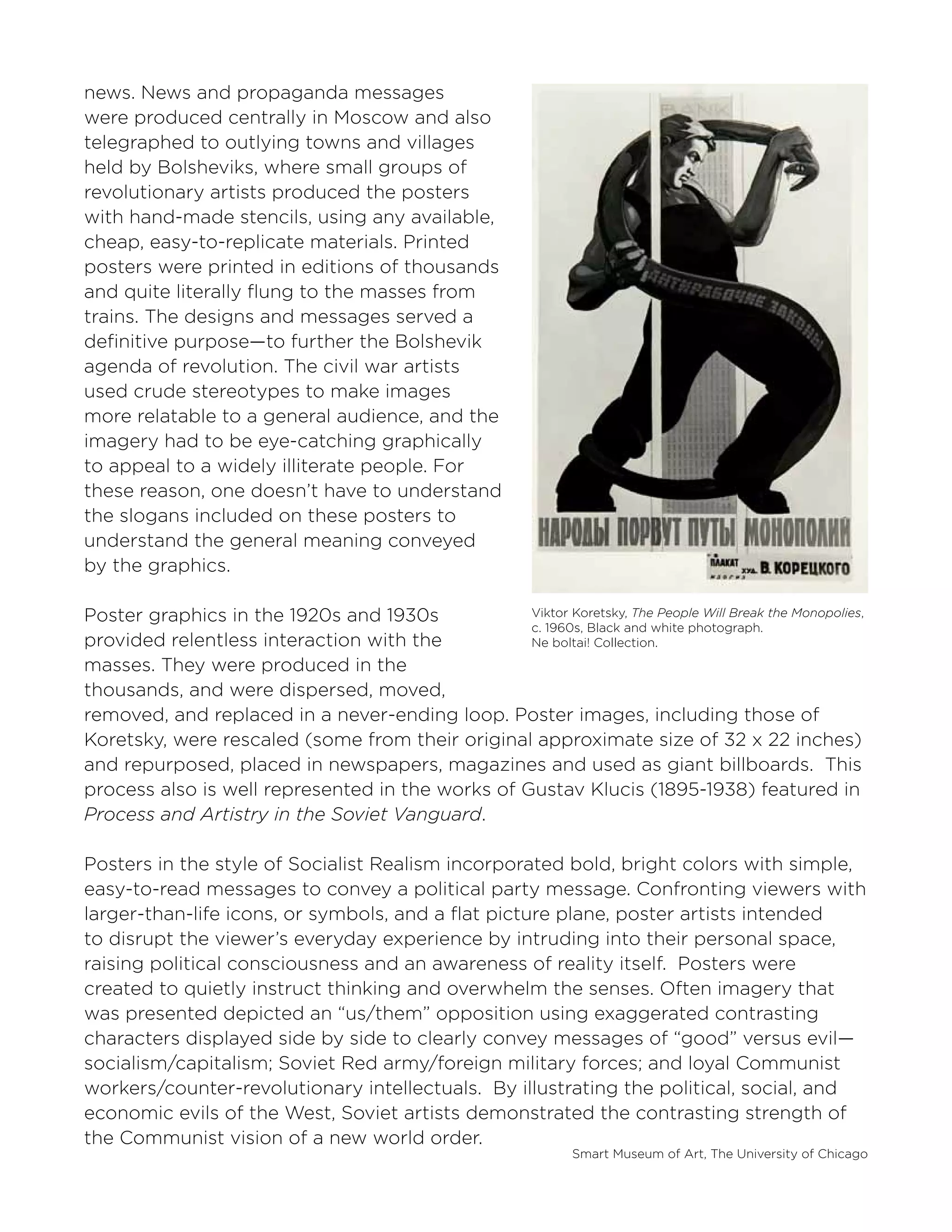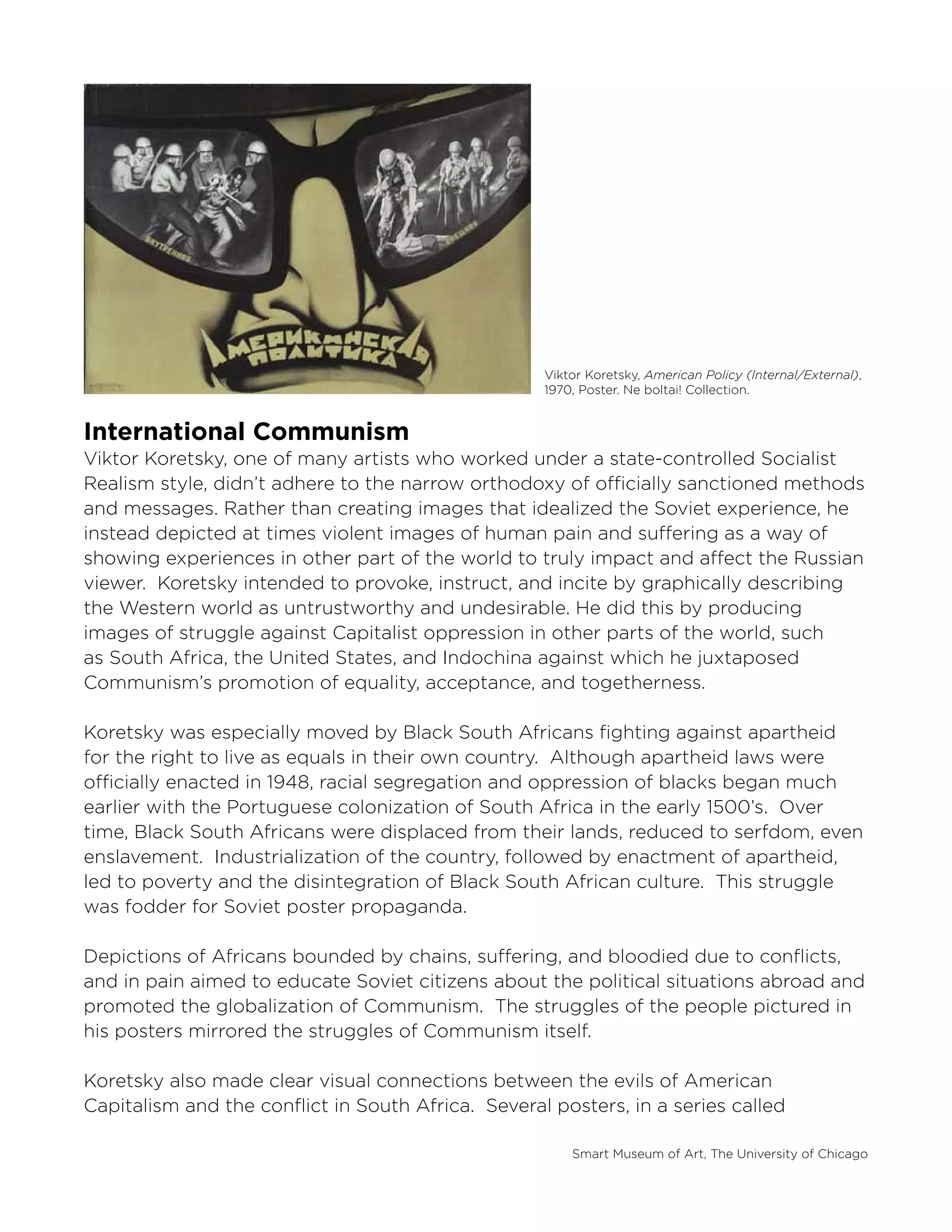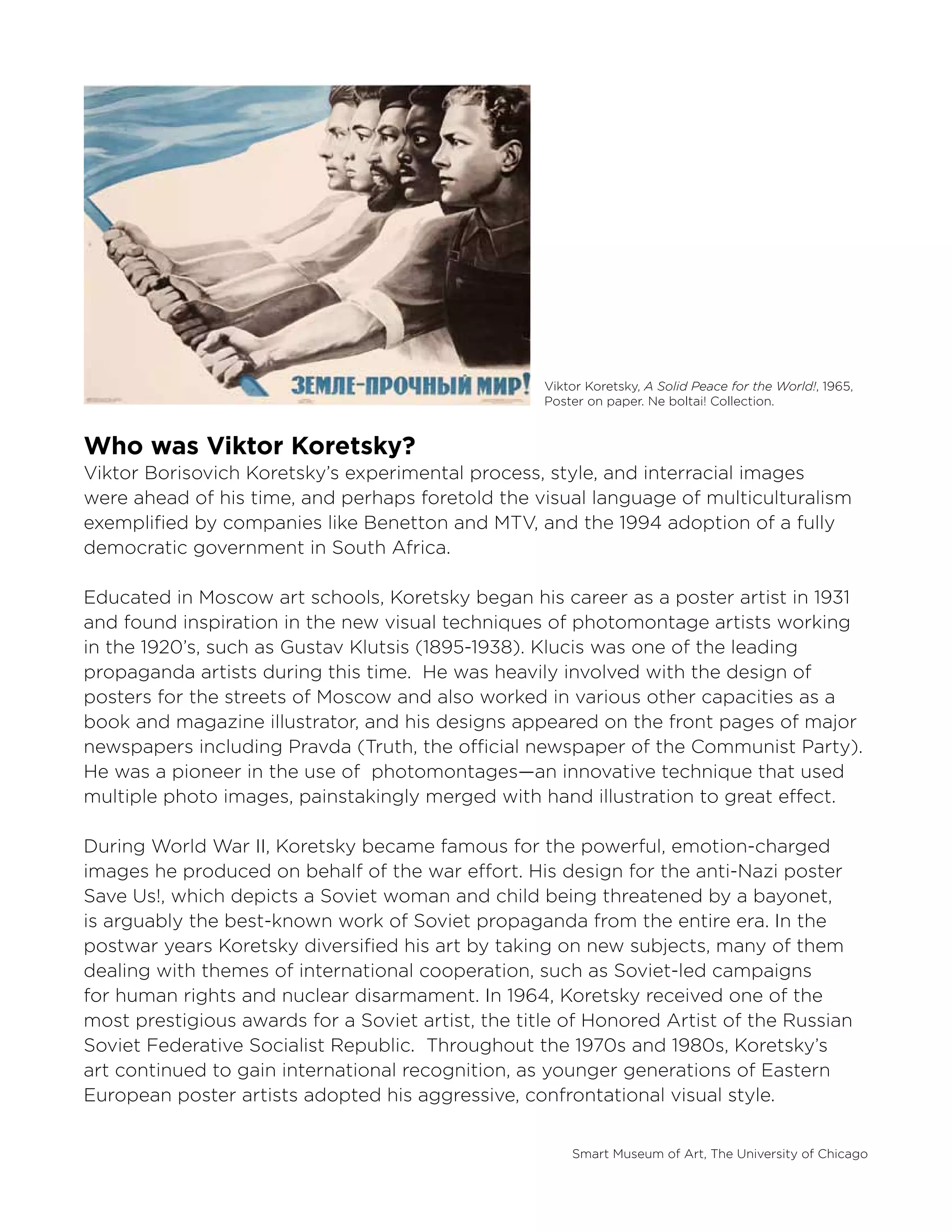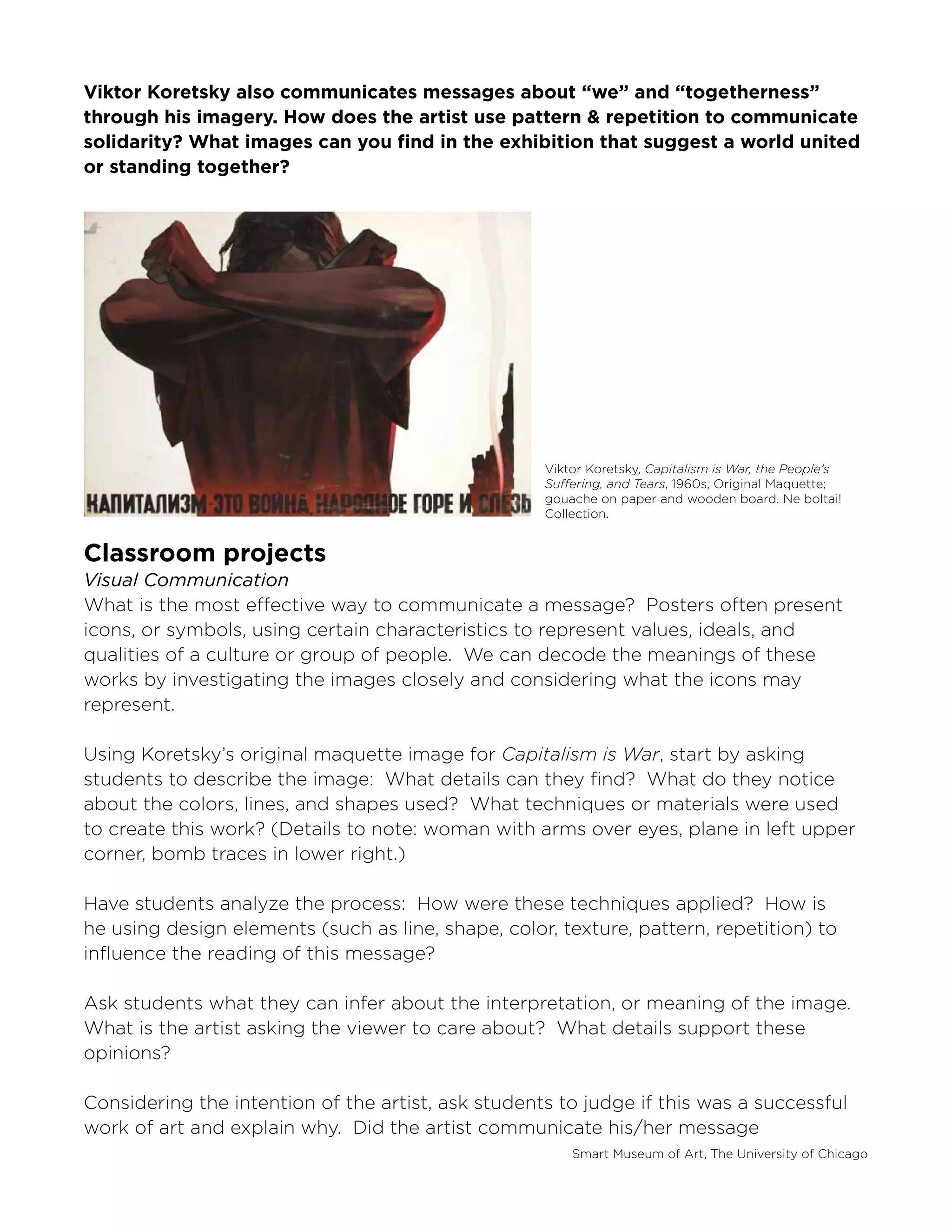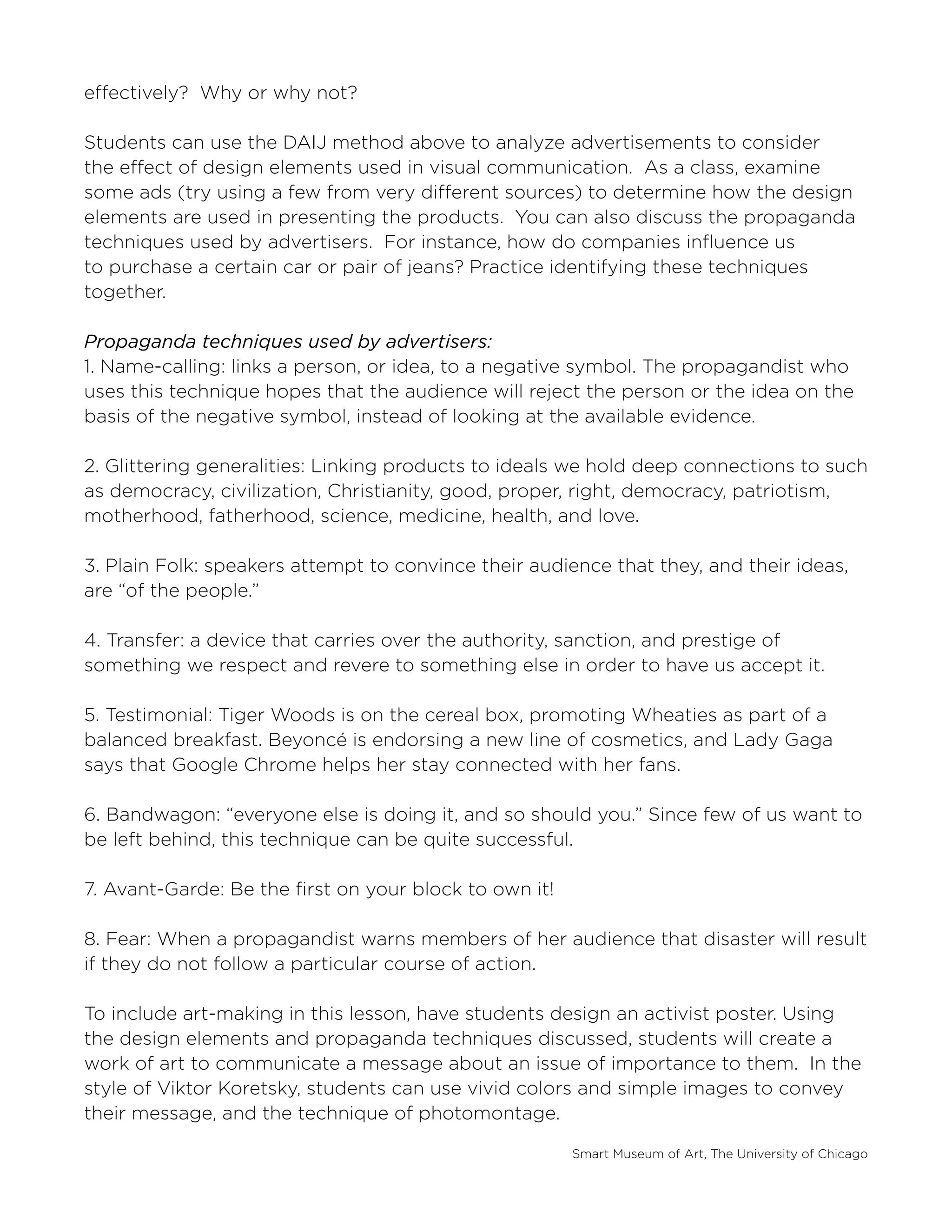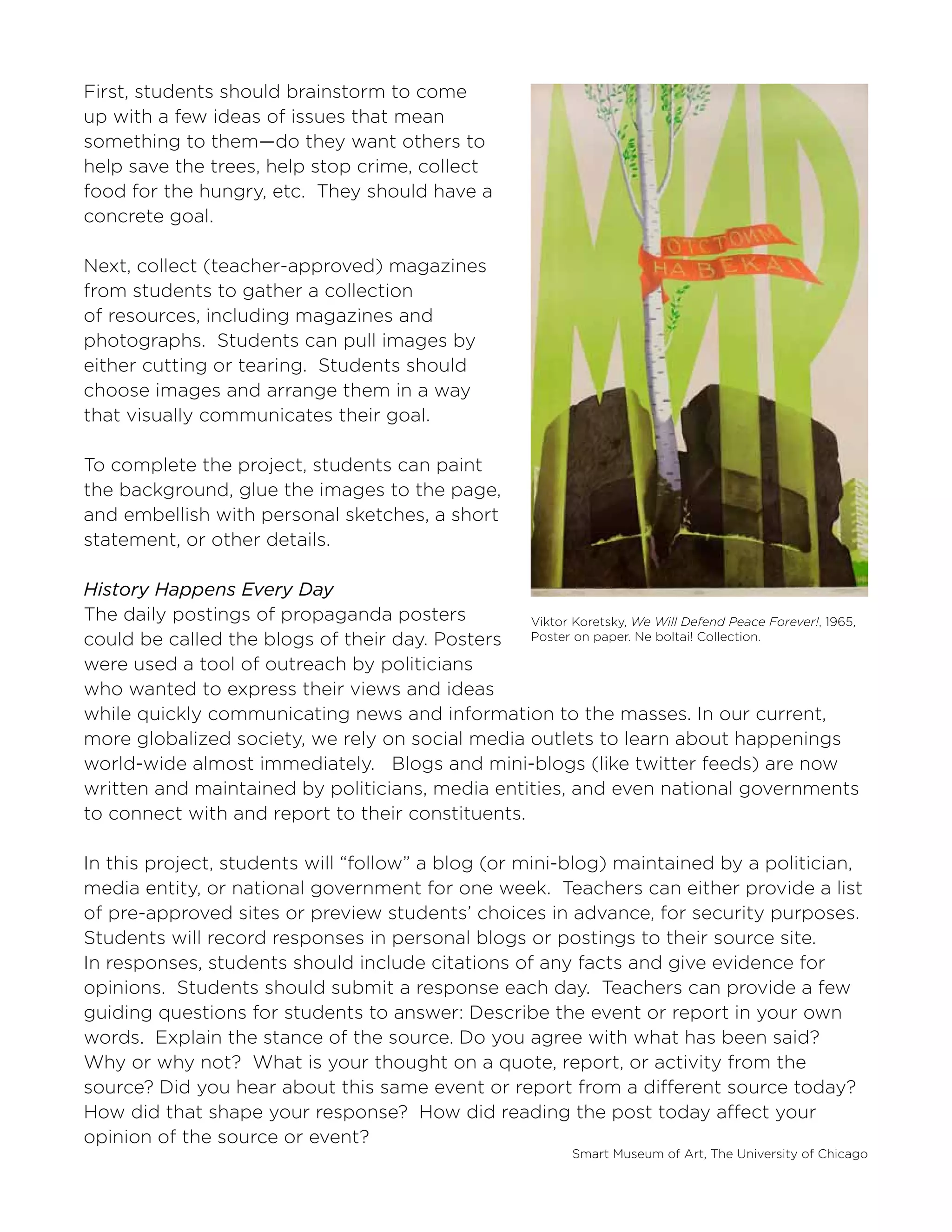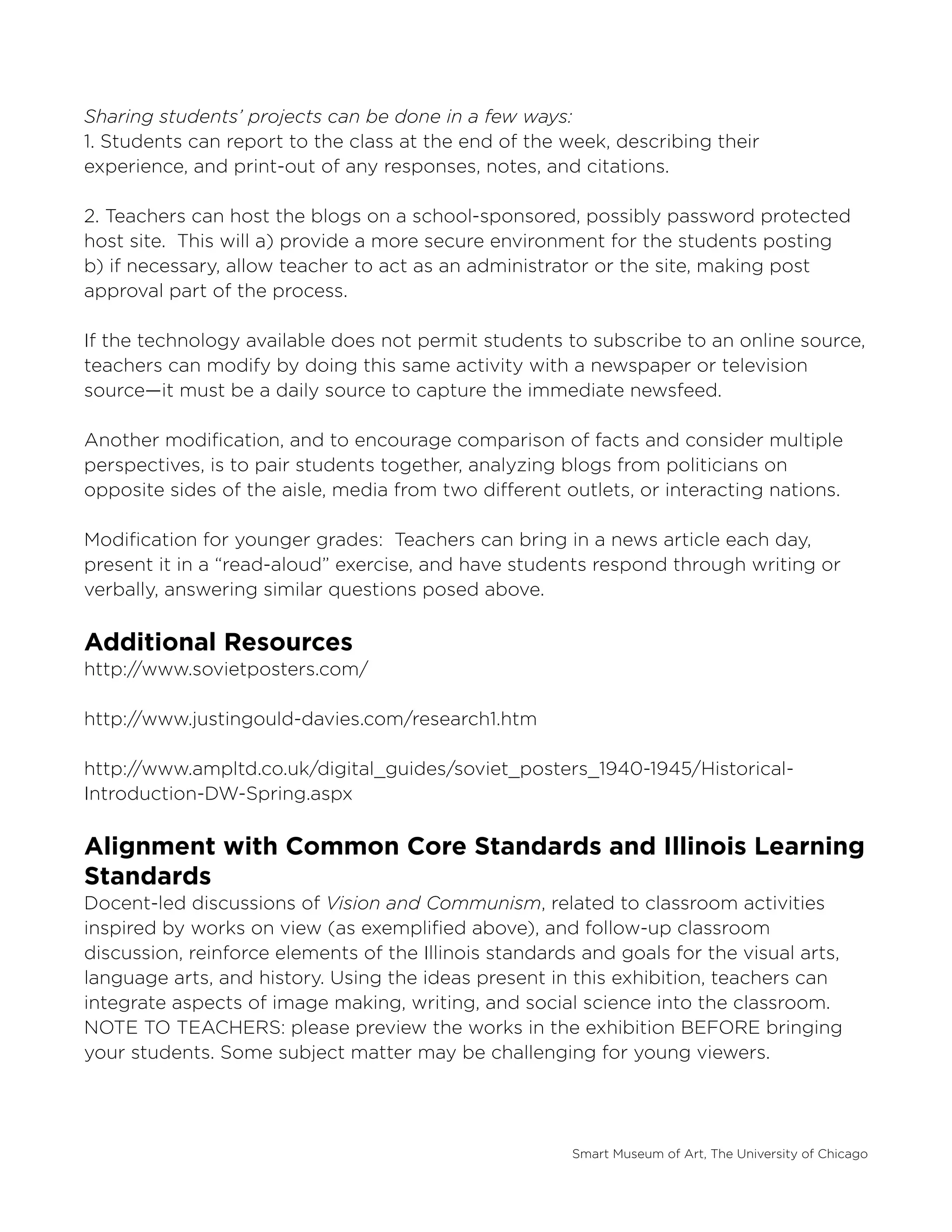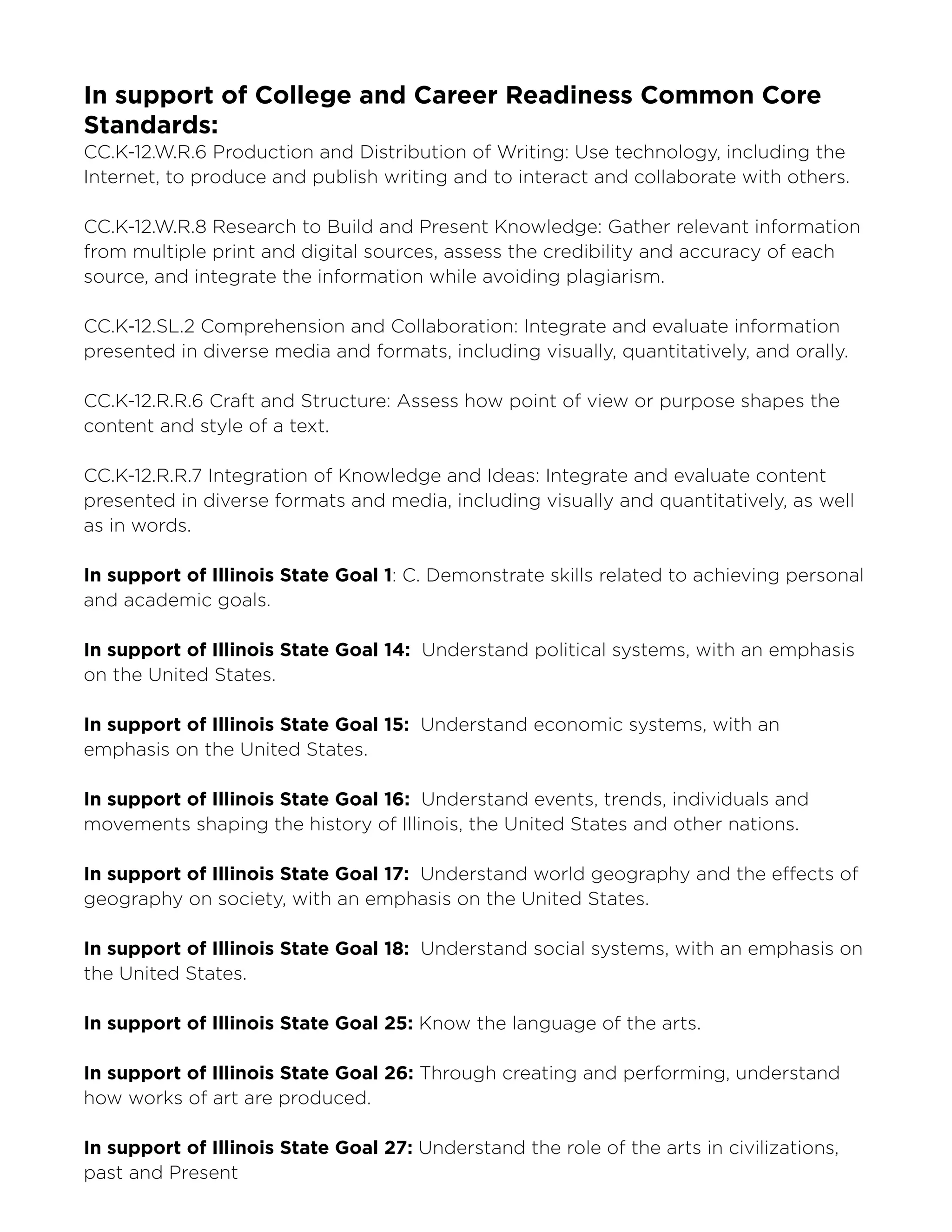The exhibition at the Smart Museum of Art features nearly 90 posters, photographs and original designs by Soviet propaganda artist Viktor Koretsky from 1930-1980. Curated by art historian Matthew Jackson, the exhibition seeks to introduce Koretsky's work to new audiences and examine what his propaganda posters reveal about visual communication and life under Communism in the 20th century. Many of Koretsky's posters depict struggles for independence and civil rights around the world in the post-WWII decades, including the anti-apartheid movement in South Africa. The exhibition analyzes how Koretsky used graphic images to communicate Communist ideology and global solidarity against oppression.
